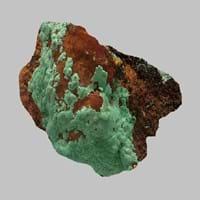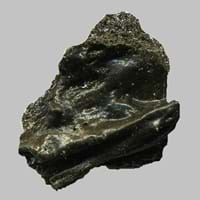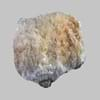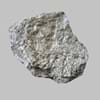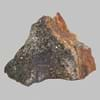Gossan and Tachylite
Definition
Definition
Gossan is intensely oxidized, weathered or decomposed rock, usually the upper and exposed part of an ore deposit or mineral vein.
Tachylite is a vitreous form of basaltic volcanic glass. This glass is formed naturally by the rapid cooling of molten basalt
History
Origin
Indonesia
Iceland
Discoverer
Cornish Gossen
Unknown
Etymology
From Cornish gossen from gos, blood from Old Cornish guit
From German Tachylite, from tachy- + Greek lutos soluble, melting
Class
Metamorphic Rocks
Igneous Rocks
Sub-Class
Durable Rock, Medium Hardness Rock
Durable Rock, Medium Hardness Rock
Family
Group
Not Applicable
Volcanic
Other Categories
Fine Grained Rock, Medium Grained Rock, Opaque Rock
Coarse Grained Rock, Fine Grained Rock, Medium Grained Rock, Opaque Rock
Texture
Texture
Rough, Sandy
Vitreous
Color
Brown, Brown- Black, Gold, Green, Rust
Black, Dark Brown
Maintenance
Less
More
Durability
Durable
Durable
Water Resistant
Yes
Yes
Scratch Resistant
Yes
No
Stain Resistant
Yes
No
Wind Resistant
No
Yes
Acid Resistant
No
Yes
Appearance
Dull and Banded
Glassy
Uses
Architecture
Interior Uses
Countertops, Decorative Aggregates, Interior Decoration
Decorative Aggregates, Interior Decoration
Exterior Uses
As Building Stone, As Facing Stone, Paving Stone, Garden Decoration, Office Buildings
As Building Stone, As Facing Stone, Garden Decoration, Paving Stone
Other Architectural Uses
Curbing
Curbing
Industry
Construction Industry
As Dimension Stone, Cement Manufacture, Construction Aggregate, for Road Aggregate
Cutting Tool, Knives, Landscaping, Scrapers
Medical Industry
Not Yet Used
Not Yet Used
Antiquity Uses
Artifacts
Artifacts
Other Uses
Commercial Uses
Cemetery Markers, Commemorative Tablets, Gemstone
Cemetery Markers, Creating Artwork
Types
Types
Translocated gossan and Leakage gossan
Not Available
Features
Clasts are smooth to touch, Easily splits into thin plates
Available in Lots of Colors and Patterns, Clasts are smooth to touch, NA
Archaeological Significance
Monuments
Not Yet Used
Not Yet Used
Famous Monuments
Not Applicable
Not Applicable
Sculpture
Not Yet Used
Not Yet Used
Famous Sculptures
Not Applicable
Not Applicable
Pictographs
Used
Used
Petroglyphs
Used
Used
Figurines
Not Yet Used
Not Yet Used
Fossils
Absent
Absent
Formation
Formation
Earth movements can cause rocks to be either deeply buried or squeezed and hence the rocks are heated and put under great pressure.
Tachylite is a fine-grained, hard rock which is a type of metasomatite, essentially altered basalt. It forms with or without crystallization, either below the surface as intrusive rocks or on the surface as extrusive rocks.
Composition
Mineral Content
Apatite, Augite, Biotite, Bronzite, Calcite, Chert, Epidote, Feldspar, Hornblende, Micas, Plagioclase, Pyroxene, Quartz, Sulfides, Zircon
Feldspar, Olivine
Compound Content
Aluminium Oxide, CaO, Fe, FeO, Silicon Dioxide, Sulphur
Fe, Mg
Transformation
Metamorphism
No
Yes
Types of Metamorphism
Not Applicable
Burial Metamorphism, Cataclastic Metamorphism, Contact Metamorphism, Hydrothermal Metamorphism, Impact Metamorphism, Regional Metamorphism
Weathering
No
Yes
Types of Weathering
Not Applicable
Biological Weathering, Chemical Weathering, Mechanical Weathering
Erosion
Yes
Yes
Types of Erosion
Chemical Erosion, Sea Erosion, Wind Erosion
Chemical Erosion, Sea Erosion, Water Erosion, Wind Erosion
Properties
Physical Properties
Hardness
4-5
5.5
Grain Size
Fine to Medium Grained
Medium to Fine Coarse Grained
Fracture
Conchoidal
Conchoidal
Streak
White to Grey
Vermilion
Porosity
Highly Porous
Less Porous
Luster
Metallic
Resinous
Compressive Strength
Not Available
206.00 N/mm2
8
Cleavage
Not Available
Not Available
Toughness
Not Available
Not Available
Specific Gravity
2.0
2.4
Transparency
Opaque
Opaque
Density
Not Available
3.058 g/cm3
Thermal Properties
Specific Heat Capacity
0.24 kJ/Kg K
24
0.56 kJ/Kg K
22
Resistance
Heat Resistant, Impact Resistant, Pressure Resistant
Heat Resistant, Impact Resistant, Wear Resistant
Reserves
Deposits in Eastern Continents
Asia
China, India, Indonesia, Russia, Singapore, South Korea
Cambodia, Russia, South Korea
Africa
Cape Verde, Ethiopia, Ghana, South Africa, Western Africa
East Africa
Europe
Albania, France, Germany, Great Britain, United Kingdom
England, Germany, Hungary, Iceland, Scotland, Sweden
Others
Not Yet Found
Hawaii Islands
Deposits in Western Continents
North America
Canada, USA
USA
South America
Brazil, Colombia, Ecuador
Not Yet Found
Deposits in Oceania Continent
Australia
New South Wales, South Australia, Western Australia
Victoria
All about Gossan and Tachylite Properties
Know all about Gossan and Tachylite properties here. All properties of rocks are important as they define the type of rock and its application. Gossan belongs to Metamorphic Rocks while Tachylite belongs to Igneous Rocks.Texture of Gossan is Rough, Sandy whereas that of Tachylite is Vitreous. Gossan appears Dull and Banded and Tachylite appears Glassy. The luster of Gossan is metallic while that of Tachylite is resinous. Gossan is available in brown, brown- black, gold, green, rust colors whereas Tachylite is available in black, dark brown colors. The commercial uses of Gossan are cemetery markers, commemorative tablets, gemstone and that of Tachylite are cemetery markers, creating artwork.
|
||
|
||
|
